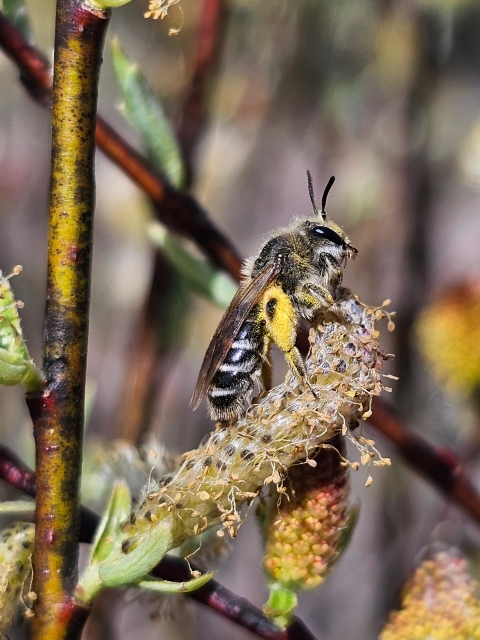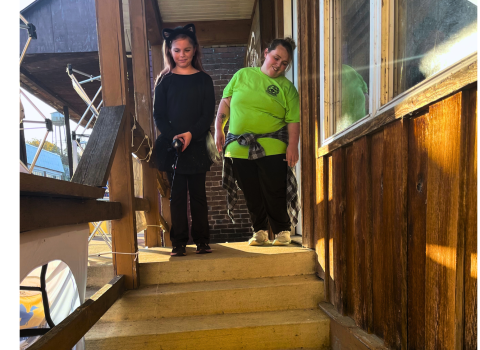The Great Lakes basin is full of native insect pollinators flitting from flower to flower, quietly ensuring the survival of countless other species. We at the U.S. Fish and Wildlife Service are leading an effort to make sure it stays that way.
“Pollinators are silent nurturers of our planet, essential for the survival of over 80% of the world’s flowering plants,” said Meredith Holm, a biologist with our agency who coordinates the Great Lakes Restoration Initiative Pollinator Task Force. “Without them, our landscapes would be unrecognizable and our food sources vastly diminished.”
Bees and butterflies, once abundant, are at risk of decline. The enchanting Poweshiek skipperling, the graceful Mitchell’s satyr butterfly and the beloved rusty-patched bumblebee are among those facing the looming shadow of extinction.
Interagency collaboration
Coordinated by our agency and launched in 2018, the task force brings together the U.S. Forest Service, National Park Service, U.S. Geological Survey, Natural Resources Conservation Service, U.S. Environmental Protection Agency, U.S. Army Corps of Engineers and more than a dozen other partners.
Together, these partners envision a Great Lakes basin teeming with self-sustaining populations of native pollinators and their vibrant, interconnected habitats, resilient in the face of environmental challenges.
The task force aims to prevent the need to list pollinator species under the Endangered Species Act, spread awareness and knowledge of the importance of native pollinators and inspire habitat restoration. The main goal is to ensure the unique and valuable role of pollinators is at the forefront of conservation.
To ensure accountability and progress, the task force adheres to a set of operating principles. They report their successes, communicate openly, forge partnerships and base decisions on the best available science and traditional ecological knowledge.
A multi-faceted approach
More specifically, the task force is focused on:
Determining the current state of pollinator populations and their habitats and identifying the threats they face, such as habitat loss, fragmentation, contaminants, pesticide use and climate change climate change
Climate change includes both global warming driven by human-induced emissions of greenhouse gases and the resulting large-scale shifts in weather patterns. Though there have been previous periods of climatic change, since the mid-20th century humans have had an unprecedented impact on Earth's climate system and caused change on a global scale.
Learn more about climate change
Identifying priority activities and focus areas
Working with a diversity of partners to implement projects that restore, enhance and protect pollinator habitats within focus areas
Raising public awareness and mobilizing partners and citizens to participate in habitat restoration with pollinators in mind, such as a tool currently under development that partners can use to incorporate pollinator-friendly efforts into their existing projects
Expanding public/private partnerships
Collaboration does not stop with federal agencies. Task force agencies are looking to expand their work with non-federal partners such as state conservation agencies, universities, non-profits, utility companies, Tribes and landowners. “Conservation is a team sport,” said Holm. “The challenges we face are too big for any one organization to tackle alone. Our strength lies in our partnerships, bringing diverse expertise and resources to the table.” The task force will continue to leverage agency resources, partners’ investments and support through the Great Lakes Restoration Initiative, especially for continued research.
On this critical journey, the task force hopes to start a movement, mobilizing partners and citizens across the Great Lakes basin to nurture the buzz of life. Together, we can ensure that pollinators, those tiny marvels of nature, continue to grace our planet, enrich our ecosystems and inspire future generations.
For more information on the Great Lakes Pollinator Task Force, visit How the U.S. Fish and Wildlife Service Helps Pollinators or reach out to Meredith Holm.







